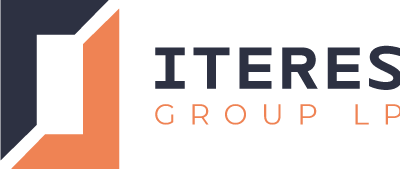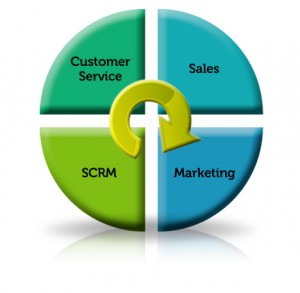Keeping Pace with Changes in Your Organization
iTeres can help your company implement the best solutions with the capacity to adapt to changes in your organization and operate on platforms that can support growth – both procedurally and operationally.Enhance your competitive advantage, within budgetary constraints. Our approach leverages current applications and builds a solution aligned with the future needs, goals, objectives, and strategies of your organization.
Your company may be considering technology systems to help meet market and customer demands such as:
• Customer Relationship Management (CRM) – which merges business strategy with technology to learn more about customer needs and behaviors by facilitating communication and interaction with them, in order to better manage customer relationships.
• Enterprise Resource Planning (ERP) – which consolidates information across business functions, particularly financial management, HR management, and supply chain management, allowing users to execute business processes within a unified business architecture.
• Analytics/ Business Intelligence
iTeres has worked with other organizations to help ensure successful implementation of technology systems and can assist in analyzing your needs, evaluating your options, and implementing solution(s) that works for your organization and its goals.
[tab_item title=”Your Needs“]Your organizational needs will differ based upon the unique circumstances facing your organization, your processes, and your organizational culture. However, the underlying business drivers for any initiative are improving your business and financial performance through better use of technology. Enterprise applications are substantial undertakings. You are likely asking questions such as:• Should we choose an on-premise or on-demand (SaaS) technology?• Should we implement our technology concurrently or separately (by functional area)?• Should we customize a packaged solution or create one from scratch?
• Are we evaluating software/ software vendors properly?
• How accurate are our TCO (total cost of ownership) forecasts?
• How do we ready our staff for project implementation and technology usage?
Ultimately, for your project (from technology decision to implementation) to succeed, you need project leadership to consider and align your people, your processes, with your chosen technology.[/tab_item]
[tab_item title=”Our Answer“]
Understand your needs
iTeres recognizes the impacts an implementation of this magnitude have on an organization. In addition to creating new business processes and changing the technology infrastructure, implementing or upgrading enterprise solutions considerably affects the organization’s people, culture, and procedures. These circumstances must be considered when choosing or developing a solution that will successfully unite the technology with the organization.
Because we are not tied to any specific software, we are only concerned about what option(s) best suit your needs. We want your project to succeed. We want your organization to realize the benefit of your project and achieve the desired ROI.
Maximize value; Minimize impact and risk
iTeres has the knowledge and experience in managing enterprise implementations and reducing the risks to your organization. We will help ensure issues such as poorly designed processes, vague requirements, and unclear project goals and objectives, which will increase the risks to delivering a successful solution, are handled effectively from the beginning.
Our expertise can help reduce implementation risk and contain long-term TCO. A vital area of focus to contain costs is the minimization of enhancements and customizations. Use our experience to guide you through the processes of determining which enhancement(s) are required, and if/what change to business process will allow the organization to continue performing efficiently, while maximizing the benefit from the delivered functionality.[/tab_item]
[/tab]
[divider scroll_text=””]
merges business strategy with technology to learn more about customer needs and behaviors by facilitating communication and interaction with them, in order to better manage customer relationships. This technology system generates a more comprehensive customer profile by linking data gathered from multiple tasks performed through different interfaces (i.e. service calls and internet purchases) for easier analysis. Customer information can then be leveraged to improve customer service and increase sales. Marketing strategies are made more efficient because you understand the customer’s needs more comprehensively.
Social CRM or SCRM combines tools and processes to participate in and leverage customer-to-customer exchanges via online social communication (through social networking sites or the organization’s own social interfaces). The aim is to foster loyalty by creating a more intimate bond between consumer and the brand through collaborative interactions. SCRM is an opportunity for the organization to learn about the customer from a different perspective, adding to the comprehensive customer profile and increasing CRM utility.
[divider scroll_text=””]
 Enterprise Resource Planning (ERP)
Enterprise Resource Planning (ERP)
consolidates information similar to CRM, but does this across all business functions, particularly financial management, HR management, and supply chain management, allowing users to execute business processes within a unified business architecture. By using a single database for these functional areas, data can be utilized across departments and business units, improving communication and enabling end-to-end business processes. Management executives have access to a more complete organizational overview, which can provide “better” information for strategic decision making.
Through the integration and synchronization of functional areas, ERP systems can improve productivity, speed, and performance by:
1. Integrating financial information
2. Integrating customer order information
3. Standardizing and accelerating manufacturing processes
4. Reducing inventory
5. Standardizing HR information
Read more about ERP at CIO Magazine
[divider scroll_text=””]
Analytics
Your organization is eager to begin gathering and integrating data from your functional areas, but that data must be protected and managed properly to ensure its consistency, integrity, accuracy, and quality for serviceable analysis. A data warehouse provides the infrastructure to store and manage both historical and current integrated data. The quality of knowledge (business intelligence) resulting from queries, reports, and data mining analysis depends upon reliable information and flexible accessibility. To realize the full potential of your CRM or ERP implementation, your data must be clean and secure.


